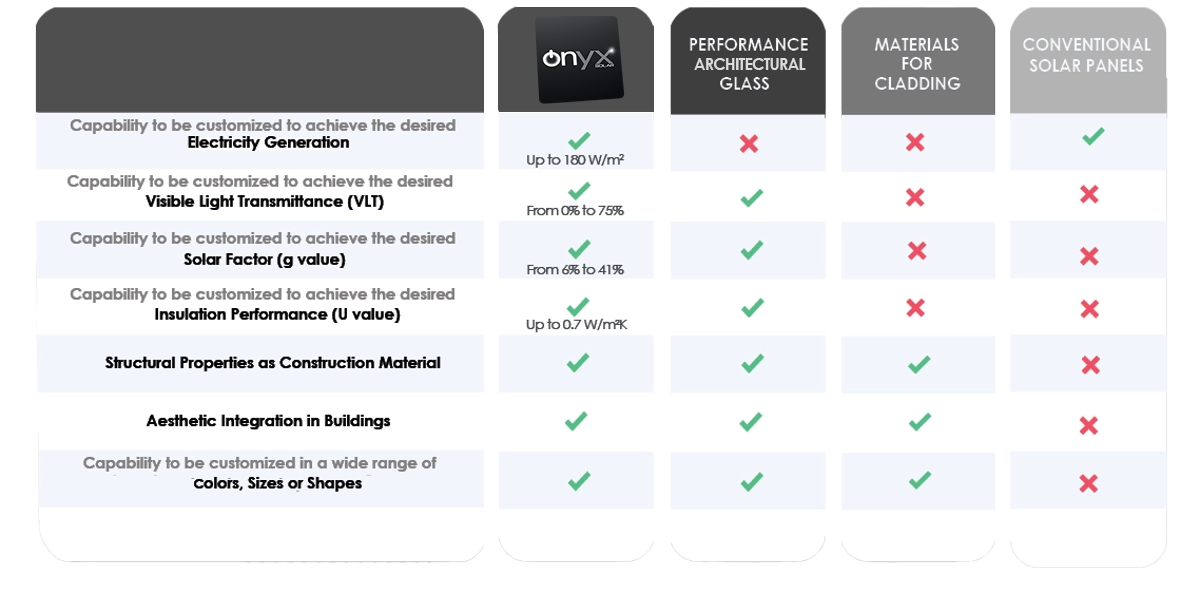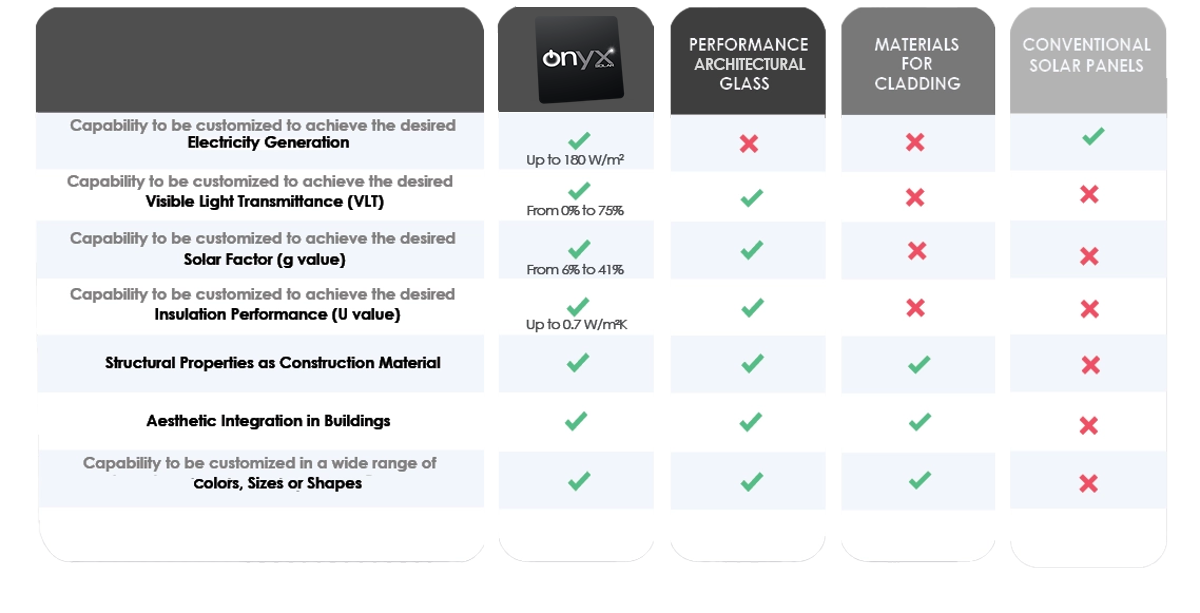BENEFITS OF PHOTOVOLTAIC INTEGRATION
BUILDING INTEGRATED PHOTOVOLTAICS BIPV
Photovoltaic glass provides versatile installation options within building envelopes, including curtain walls, façades, sunshades, railings, skylights, canopies, and walkable floors. It combines the standard structural and thermal benefits of traditional glass with the added advantage of clean power generation. Ideal for both new constructions and renovations, our Photovoltaic glass acts like a solar power generator and high-performance architectural glass. Fully customizable, it offers a range of configurations, including laminated safety and insulating glass. Options for solar technology, transparency, shapes, textures, colors, and finishes allow for extensive design flexibility. Our internationally acclaimed products, recognized with awards such as the Most Innovative Glass Product by the U.S. National Glass Association, meet various criteria like U-value or thermal transmittance, SHGC (Solar Heat Gain Coefficient), VLT (Visible Light Transmittance), reflectivity, and glare control.
CLEAN ELECTRICITY GENERATION
Photovoltaic glass, acts like a solar power generator, capturing clean, free energy from sunlight through integrated active layers or cells of photovoltaic material. The energy output varies based on design factors and installation type. Key elements include solar cell density, the number of cells, and glass dimensions. For example, a high-density crystalline silicon product with lower transparency delivers up to 180 W/m², while a lower-density version with higher light transmission offers around 100 W/m². Balancing power output with light transmittance is essential for aligning with both design goals and performance needs.
VISIBLE LIGHT TRANSMITTANCE (VLT)
Visible Light Transmittance (VLT) is crucial when selecting architectural glass. Onyx Solar’s photovoltaic glass can be customized to offer VLT levels from 0% (fully opaque) to 75% (high transparency).
It’s important to note the inverse relationship: higher transparency reduces energy capture. For spandrel and solid cladding, high solar cell density maximizes performance. For vision areas, lower density meets optical needs and enhances comfort.
SOLAR FACTOR (g-value)
The solar factor, or g-value (Solar Heat Gain Coefficient - SHGC), indicates the amount of solar energy that glazing permits into a building relative to the energy it absorbs. This metric is essential for managing indoor thermal comfort. A high solar factor can lead to overheating, while a low factor helps maintain a cooler indoor environment, especially in warm climates. Onyx Solar’s photovoltaic glass offers a solar factor between 6% and 41%, providing effective control over indoor temperatures.
INSULATION PERFORMANCE (U-value)
The U-value measures the amount of heat transferred through glass due to temperature differences on either side. A lower U-value indicates better thermal performance, enhancing energy efficiency and reducing costs. Onyx Solar’s glass achieves U-values as low as 0.7 W/m²K, providing exceptional thermal performance for buildings.




